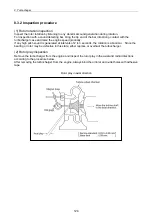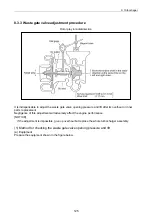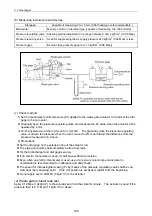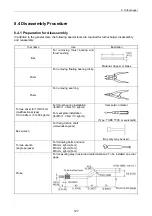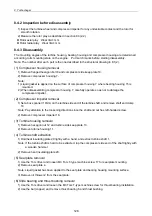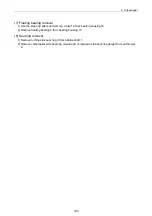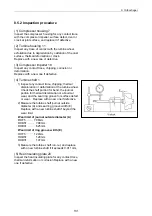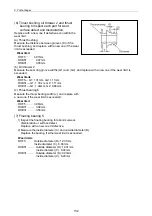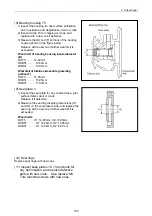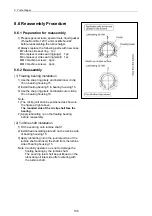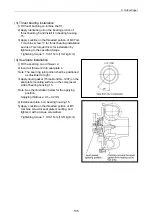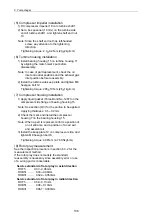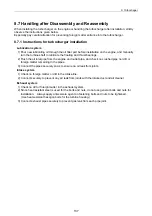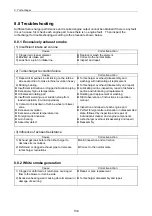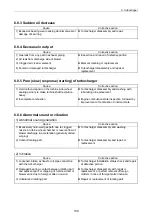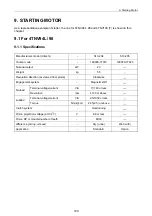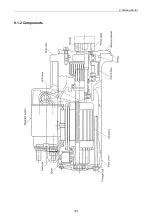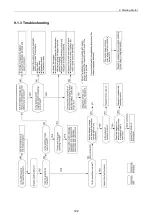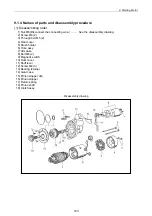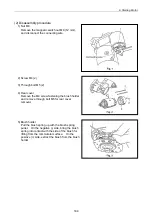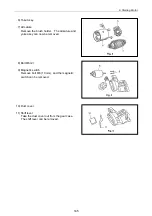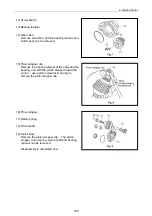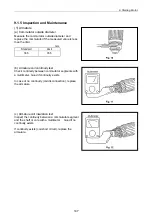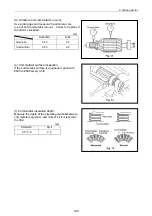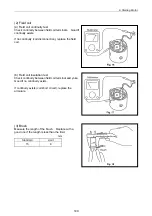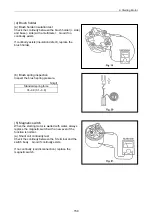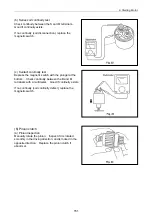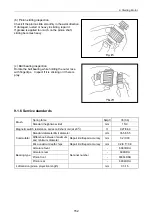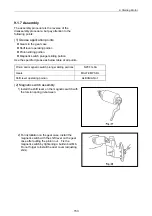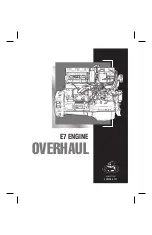
8. Turbochager
8.8 Troubleshooting
Sufficient turbocharger performance and required engine output cannot be obtained if there is any fault.
In such a case, first check each engine part to see there is no engine fault. Then inspect the
turbocharger for troubleshooting according to the procedure shown below.
8.8.1 Excessively exhaust smoke
(1) Insufficient intake air volume
Cause Corrective
action
1) Clogged air cleaner element
2) Blocked air intake port
3) Leak from a joint in intake line
Replace or wash the element.
Correct to the normal state.
Inspect and repair.
(2) Turbocharger revolution failure
Cause Corrective
action
1) Deposit of impurities in oil sticking on the turbine
side seal portion to make turbine revolution heavy
2) Sticking bearing
Insufficient lubrication or clogged lubrication piping
Excessively high oil temperature
Unbalanced rotating part
Insufficient warming up or sudden stoop from
loaded operation (no-load operation)
3) Contact or breakdown of turbine wheel or blower
vane
Excessive revolution
Excessive exhaust temperature rise
Foreign matter invasion
worn bearing
Assembly defect
Turbocharger overhaul (disassembly and
washing) with lubricating oil replacement
Turbocharger overhaul (disassembly and repair)
Lubricating oil line inspection, repair of defective
portion and lubricating oil replacement
Rotating part replacement or washing
Strict observance of instructions in operation
manual
Inspection and repair of each engine part
Perfect foreign matter elimination in disassembled
state, followed by inspection and repair of
individual air cleaner and engine components
turbocharger overhaul (disassembly and repair)
Reassembly
(3) Influence of exhaust resistance
Cause Corrective
action
1) Exhaust gas leak before the turbocharger to
decrease its revolutions
2) Deformed or clogged exhaust pipe to decrease
turbocharger revolutions
Joint inspection and correction
Correct to the normal state.
8.8.2 White smoke generation
Cause Corrective
action
1) Clogged or deformed oil return pipe causing oil
flow to the blower or turbine side
2) Excessive bearing wear causing abnormal wear or
damage of seal ring
Repair or pipe replacement
Turbocharger disassembly and repair
138
Summary of Contents for 3TNV Series
Page 1: ...4TNV106 4TNV106T 4TNV94L 4TNV98 4TNV98T 3TNV82A 3TNV84 T 4TNV84 T 3TNV88 4TNV88 ...
Page 31: ...1 General 1 4 Engine External Views 16 ...
Page 32: ...1 General 1 5 Structural Description 17 ...
Page 156: ...9 Starting Motor 9 1 2 Components 141 ...
Page 157: ...9 Starting Motor 9 1 3 Troubleshooting 142 ...
Page 172: ...9 Starting Motor 9 2 3 Troubleshooting 157 ...
Page 175: ...9 Starting Motor 2 Removal of magnetic switch Remove the M6 bolts 10mm 2 160 ...
Page 185: ...9 Starting Motor 3 Brush 1 Check wear of the brush and the brush spring force 170 ...
Page 194: ...10 Alternator 179 10 1 6 Troubleshooting ...
Page 195: ...11 Electric Wiring 180 11 ELECTRIC WIRING 11 1 Electric Wiring Diagram ...
Page 213: ......

